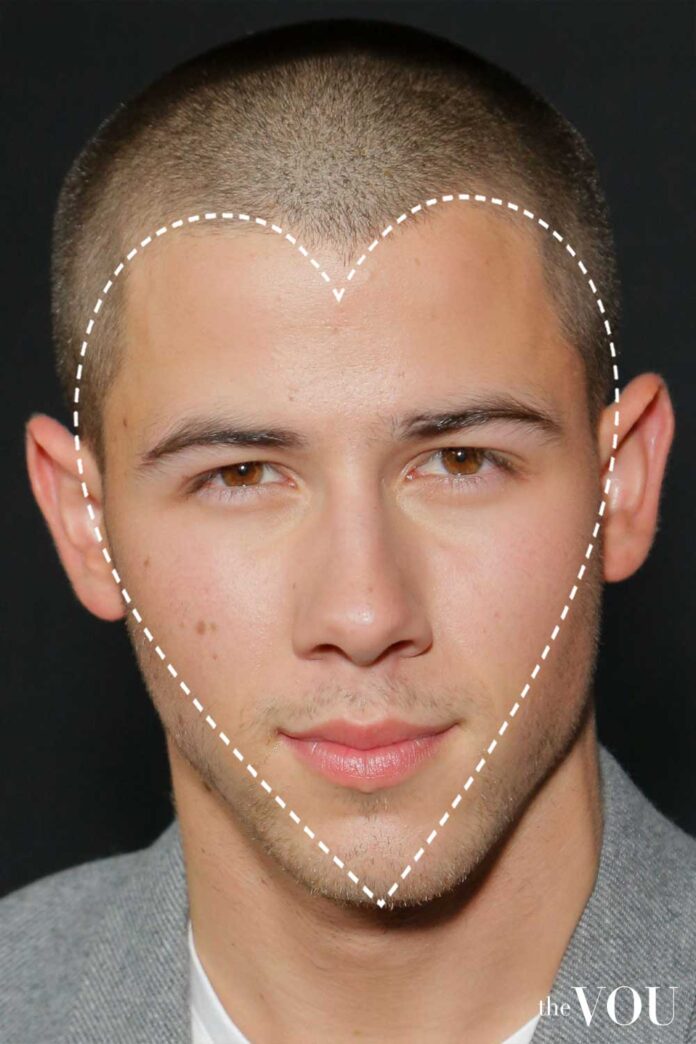Quick Answer
You have a heart face shape if your forehead forms the widest part of your face, with your face gradually becoming narrower towards your chin. Think of your face as having the proportions of a heart – wider at the top (forehead) and tapering to a narrower, softer point at the bottom (chin), like an inverted triangle with gentle curves.
Key Identifying Features
Your forehead is the widest part of your face (similar to the top of a heart shape).
Your face gradually narrows from forehead to chin in a curved manner.
Your chin appears narrower and smaller than both your forehead and cheekbones.
Your hairline may have a slight widow’s peak, though this isn’t essential.
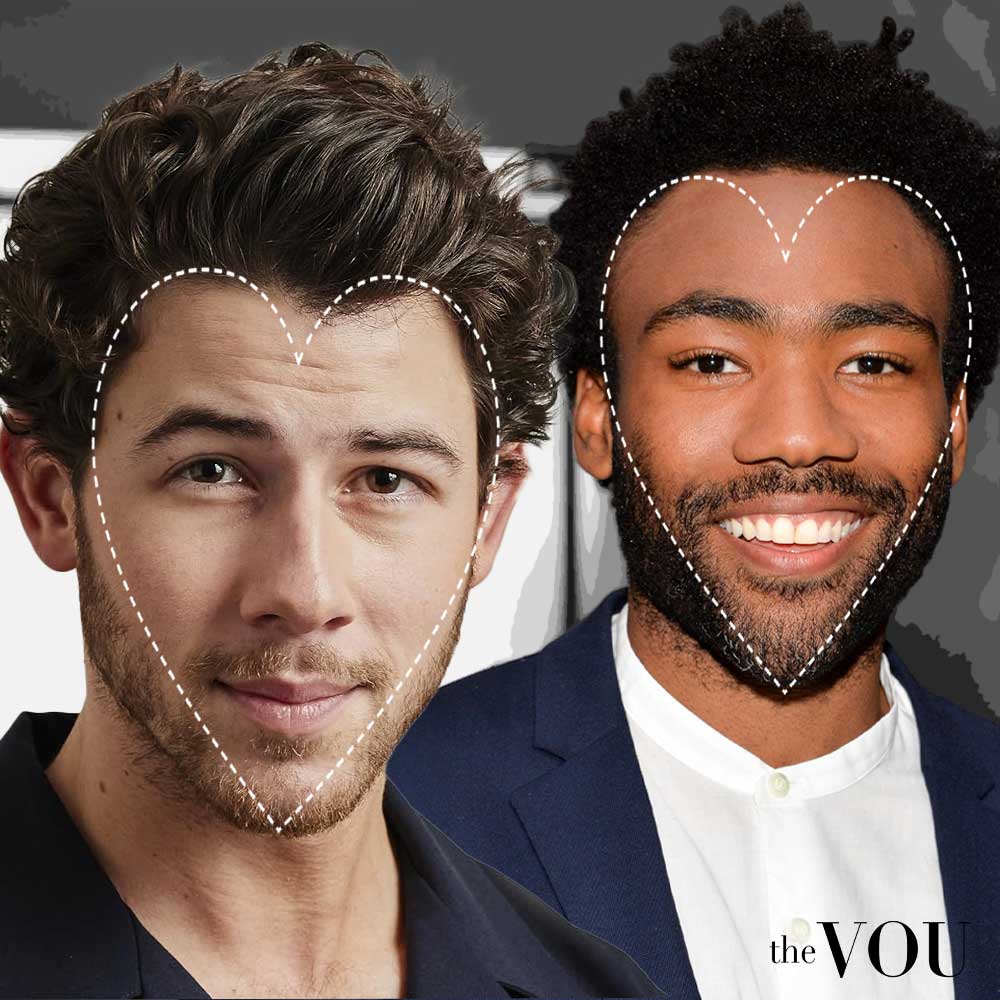
Finding your face shape shouldn’t require complex measurements or scientific tools.
This guide will help you easily identify whether you have a heart face shape through simple observations you can make using just your mirror and everyday objects as reference points.
How to Identify Your Heart Face Shape (Easy Guide)
Looking straight in the mirror, your heart face shape shows a broad forehead that forms the widest part of your face.
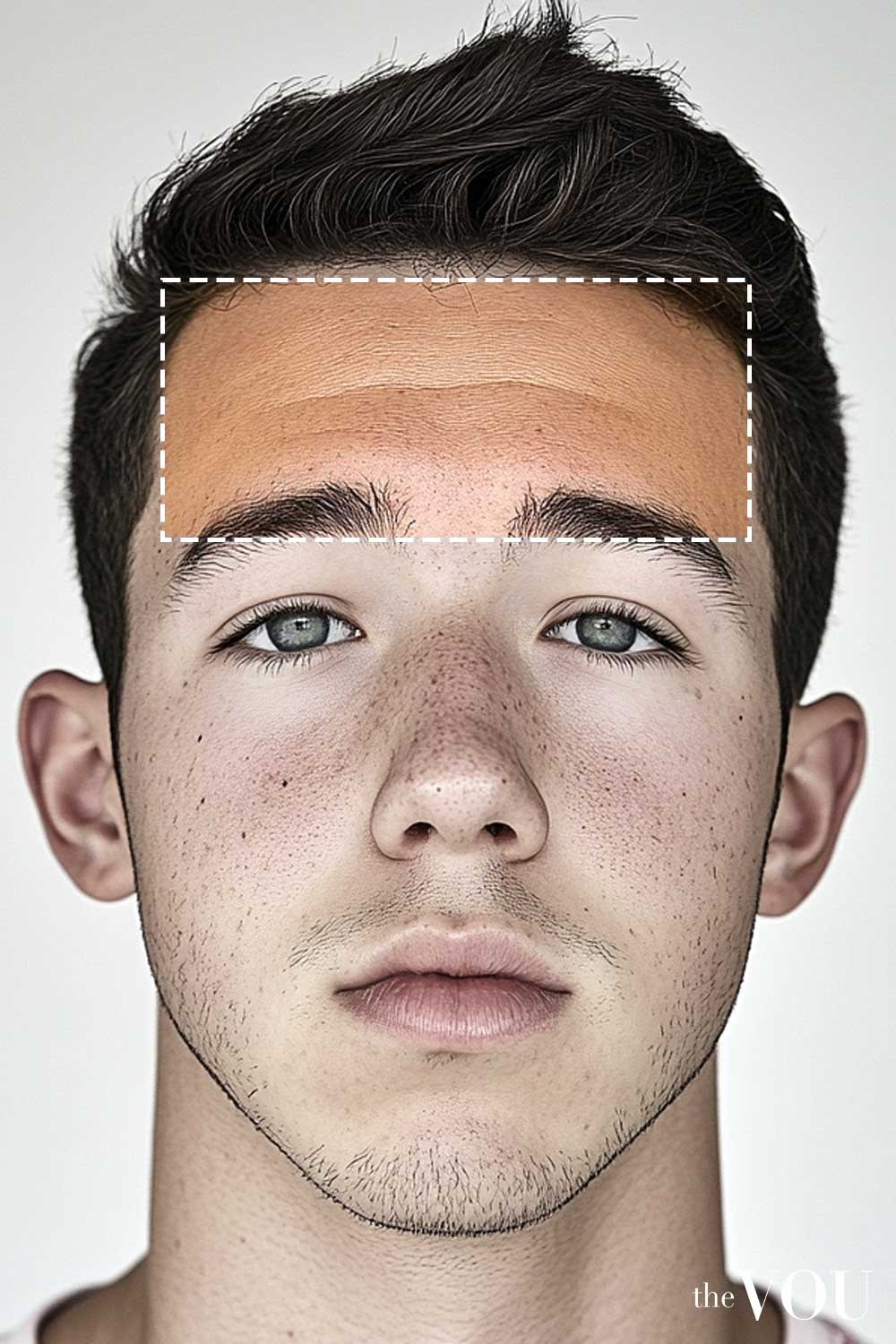
Your face gradually narrows from the forehead through the cheekbones and down to a smaller chin.
The sides of your face curve gently inward as they move down toward your chin, creating a heart-like silhouette.
When you trace your face with your finger, you’ll notice soft transitions rather than sharp angles.
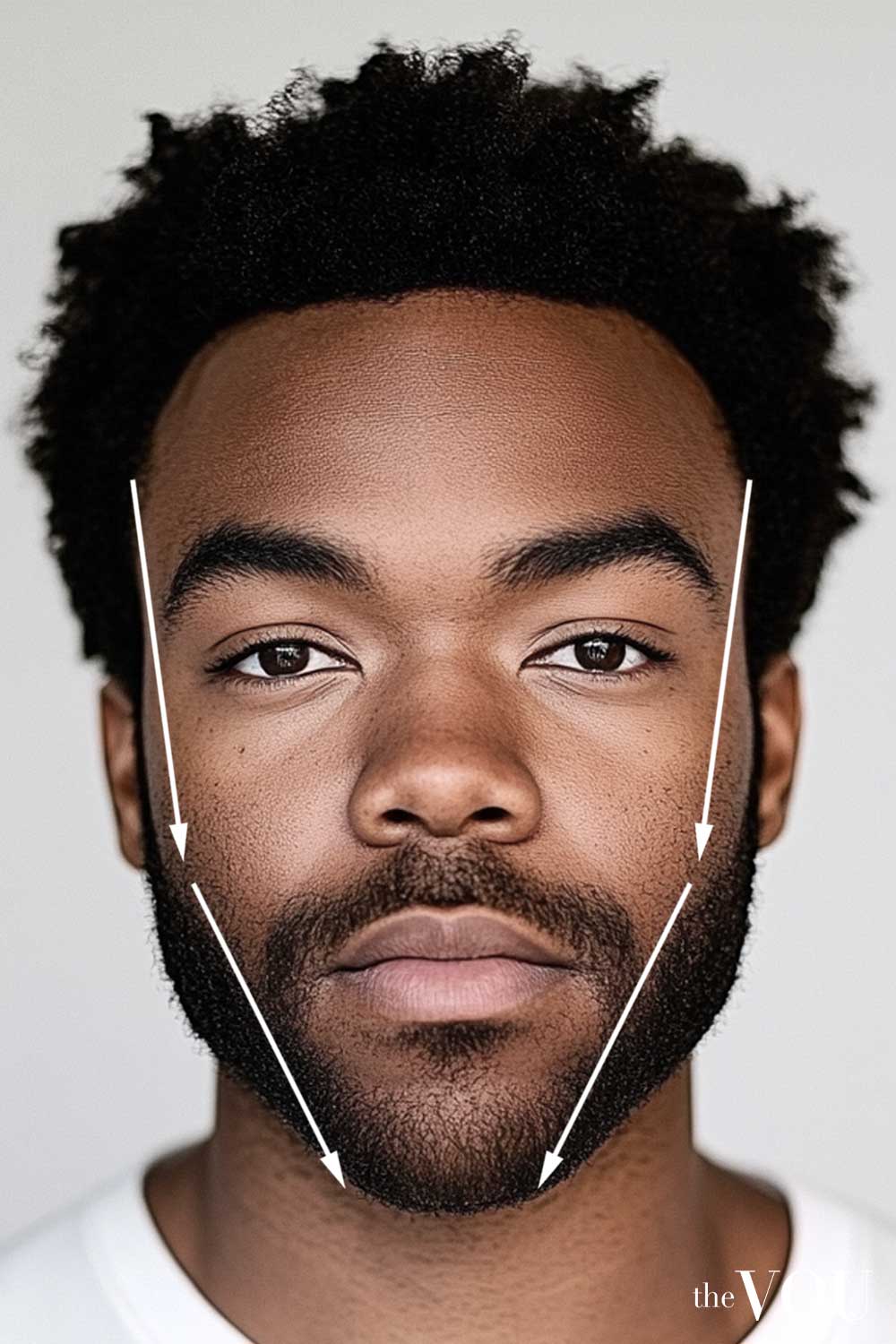
From the side view, your forehead creates a gentle curve that leads to less prominent cheekbones.
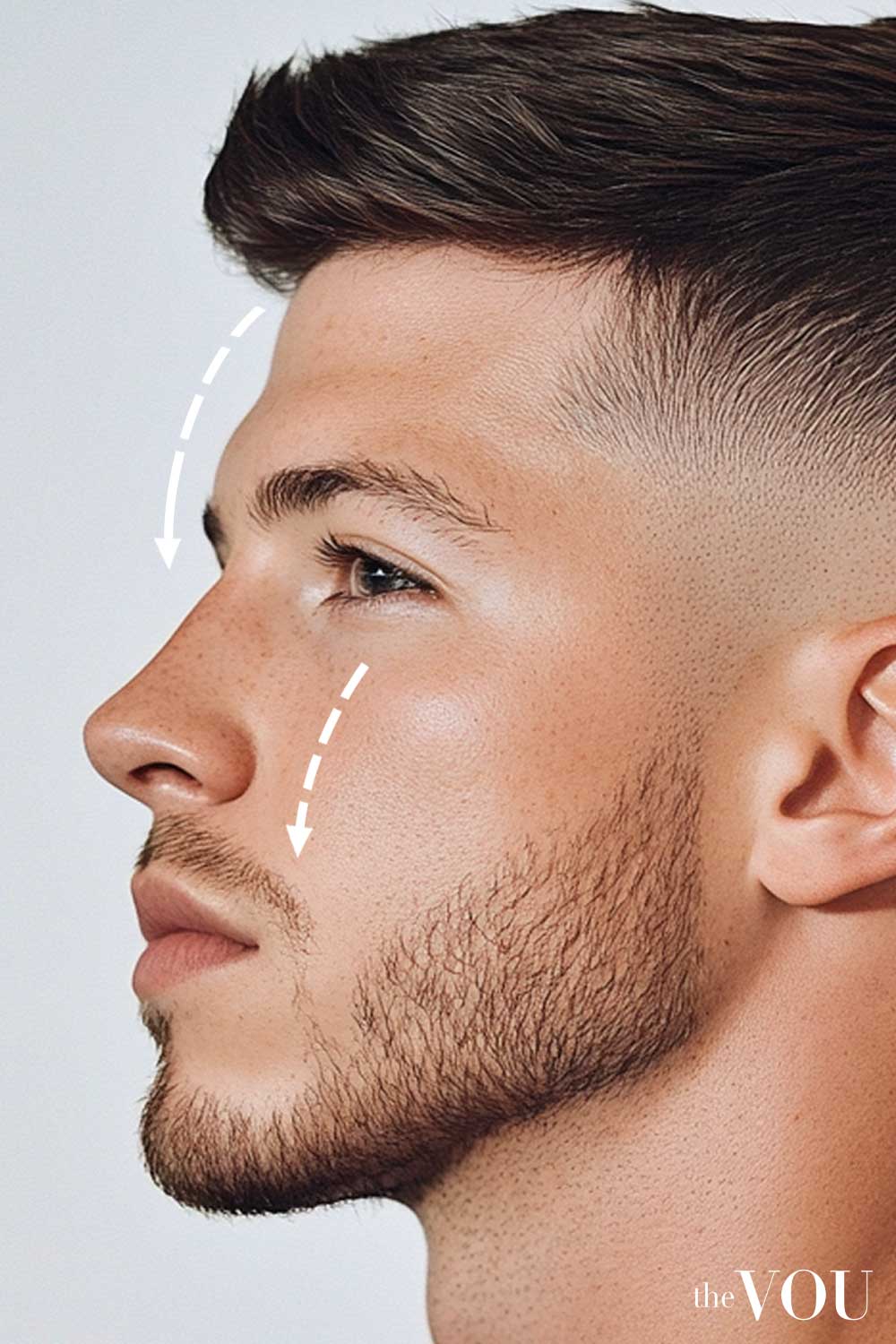
When you smile, your cheeks create gentle curves that maintain the heart-shaped proportions.
Your chin appears more delicate and narrower compared to your upper face features.
The area below your cheekbones tapers smoothly to create a softer point at the chin.
Front View Test
Stand in front of your mirror and use your fingers to check three simple points on your face.
Place your index fingers at your temples – this will be the widest measurement of your face.
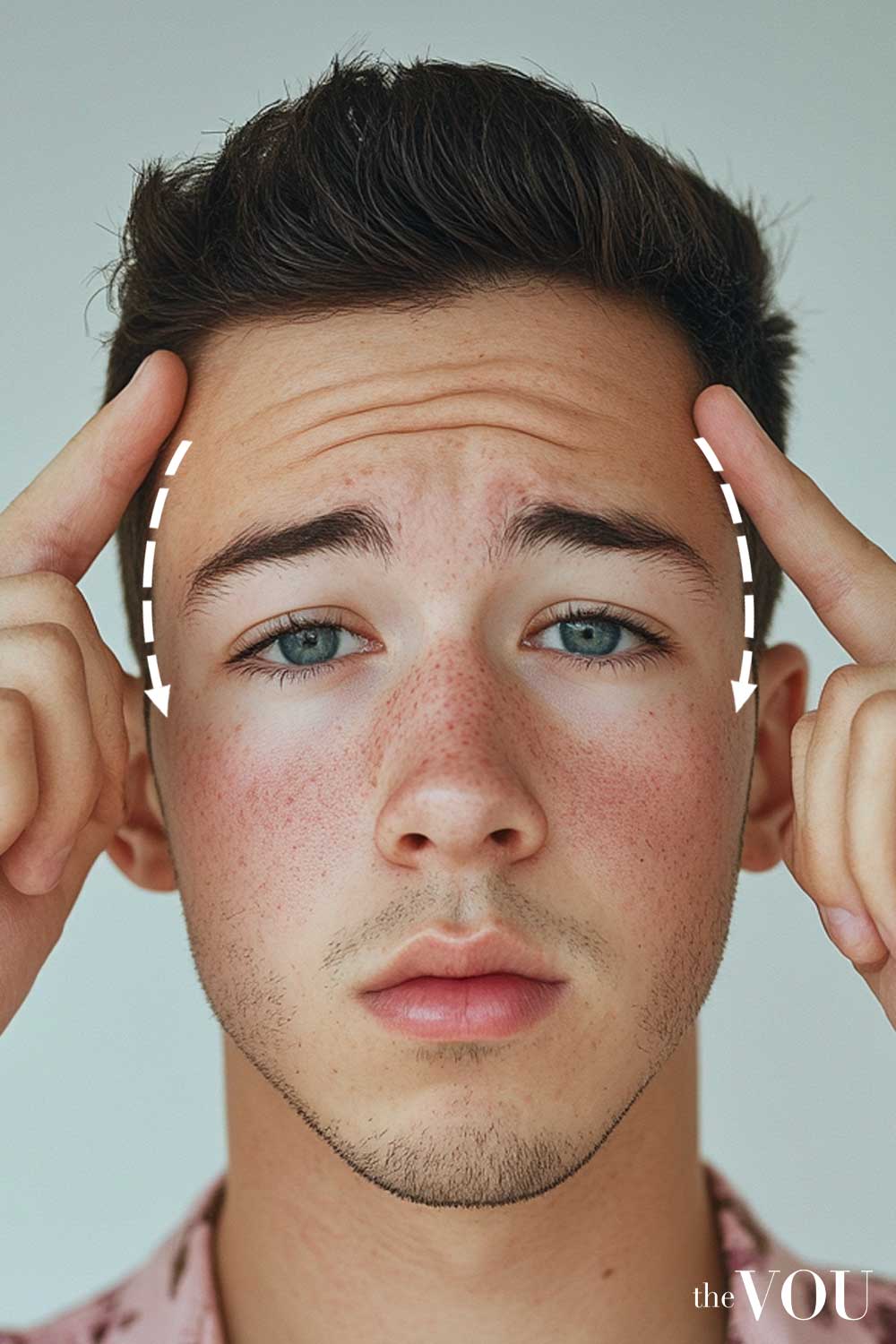
Move your fingers to the outer edges of your cheekbones – notice they’re slightly narrower than your forehead.
Finally, place your fingers at the corners of your jaw – this should be the narrowest measurement, tapering to your chin.
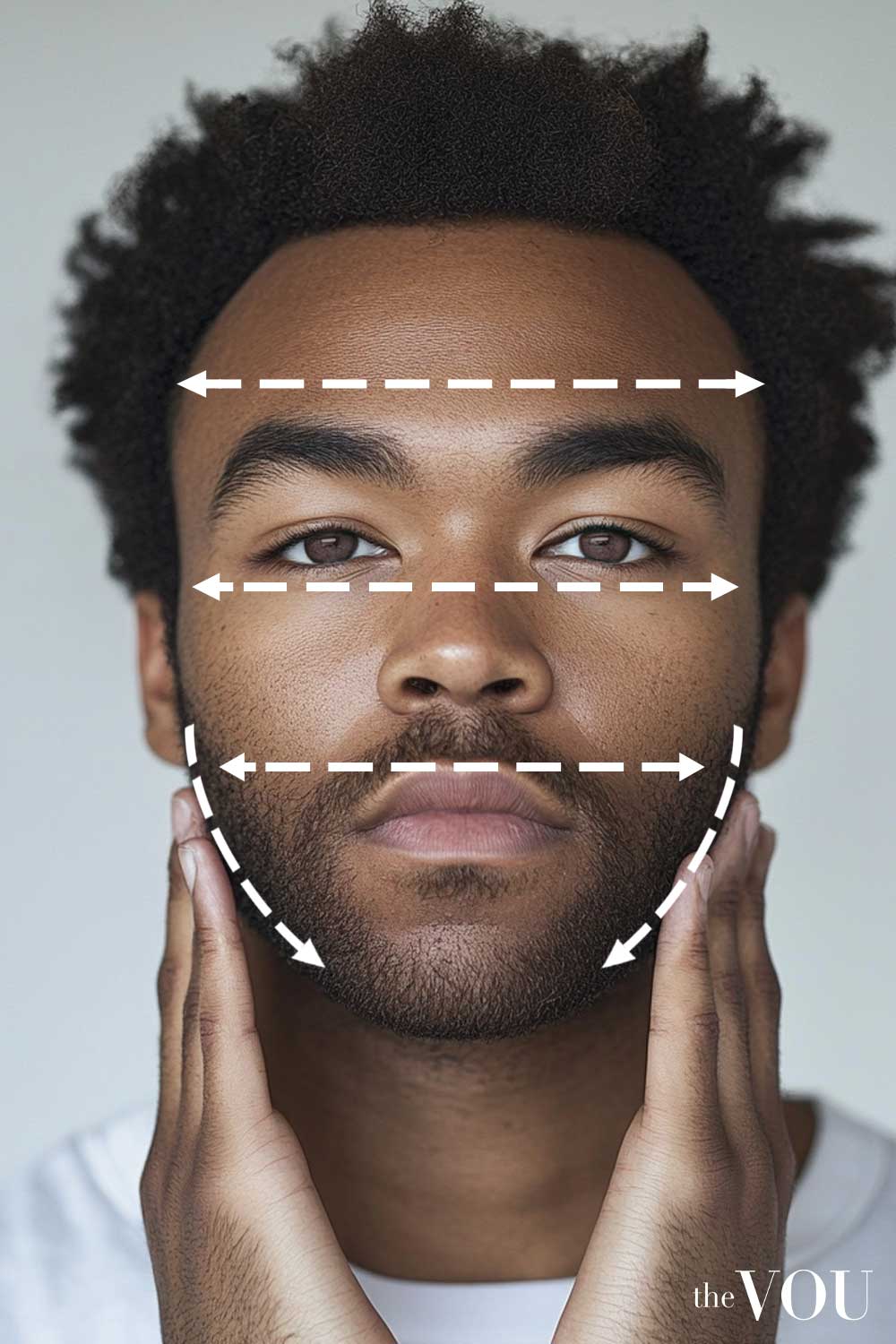
Profile View Test
Look at your face from the side using a second mirror or a side-view photo. Notice how your forehead creates a gentle curve that leads to your nose bridge.
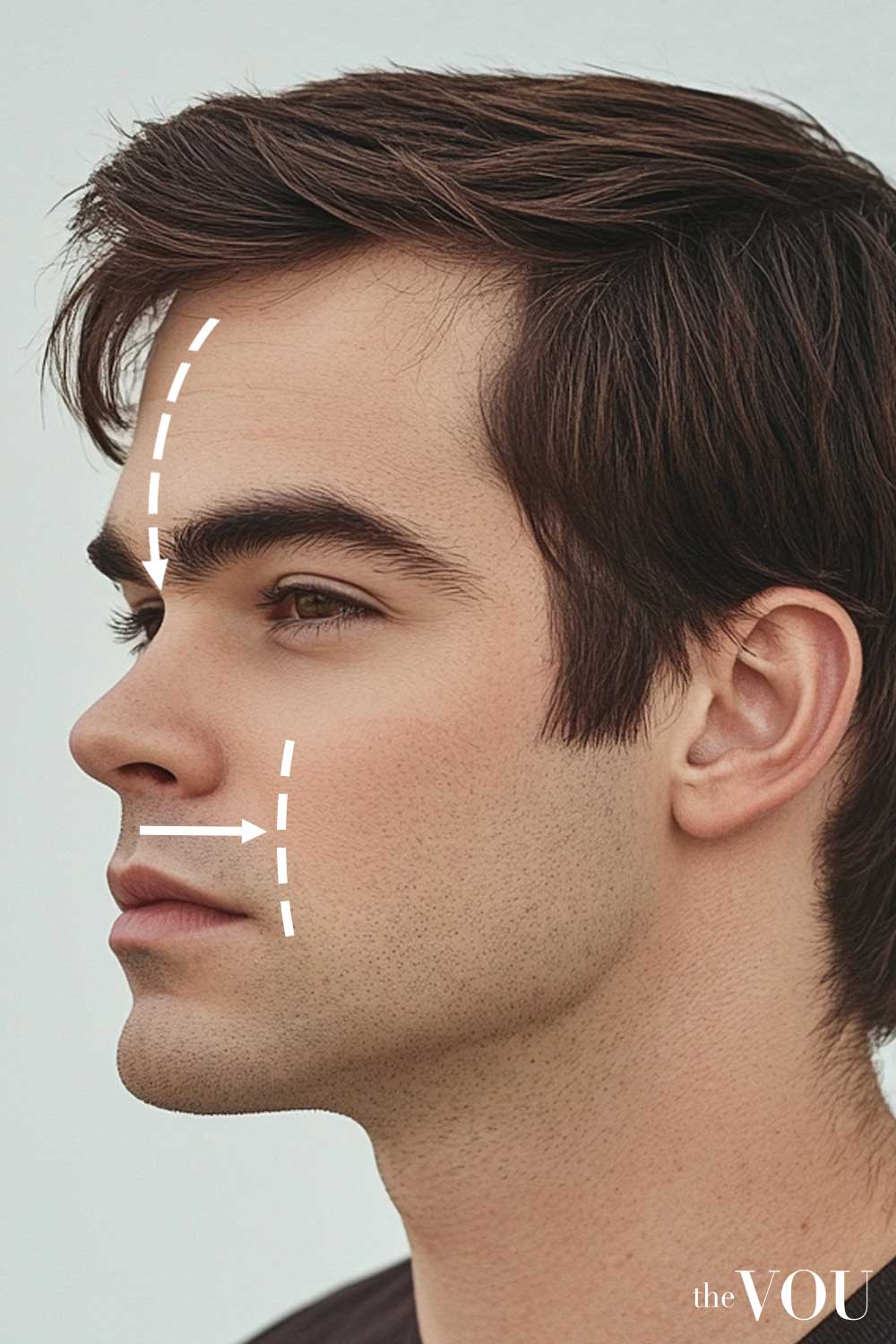
Your chin sits slightly back compared to your forehead when viewed from the side. The side view emphasises the gradual narrowing from forehead to chin.
Measurements and Proportions for Heart Face Shape (Professional Analysis)
When we look at the proportions, a heart-shaped face exhibits distinct ratios that set it apart from other face shapes.
The forehead width typically measures 1.5 times the width of the chin, creating that characteristic inverted triangle silhouette.
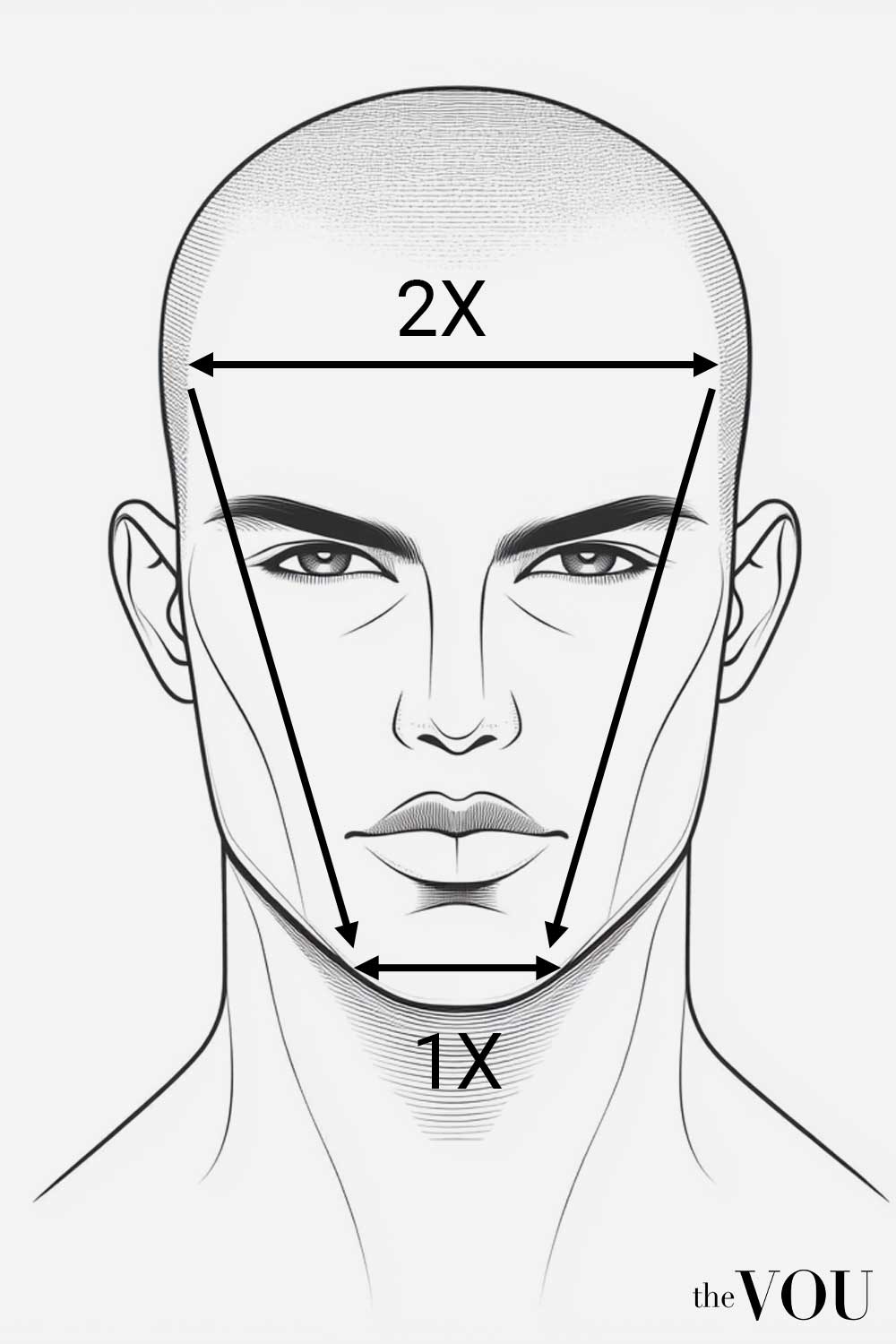
To put this in perspective, if your chin measures 4 inches across at its widest point, your forehead would measure approximately 6 inches across.
The overall length of your face plays an important role too. In a heart-shaped face, the total length from hairline to chin typically measures about 1.3 to 1.4 times the width of the forehead.
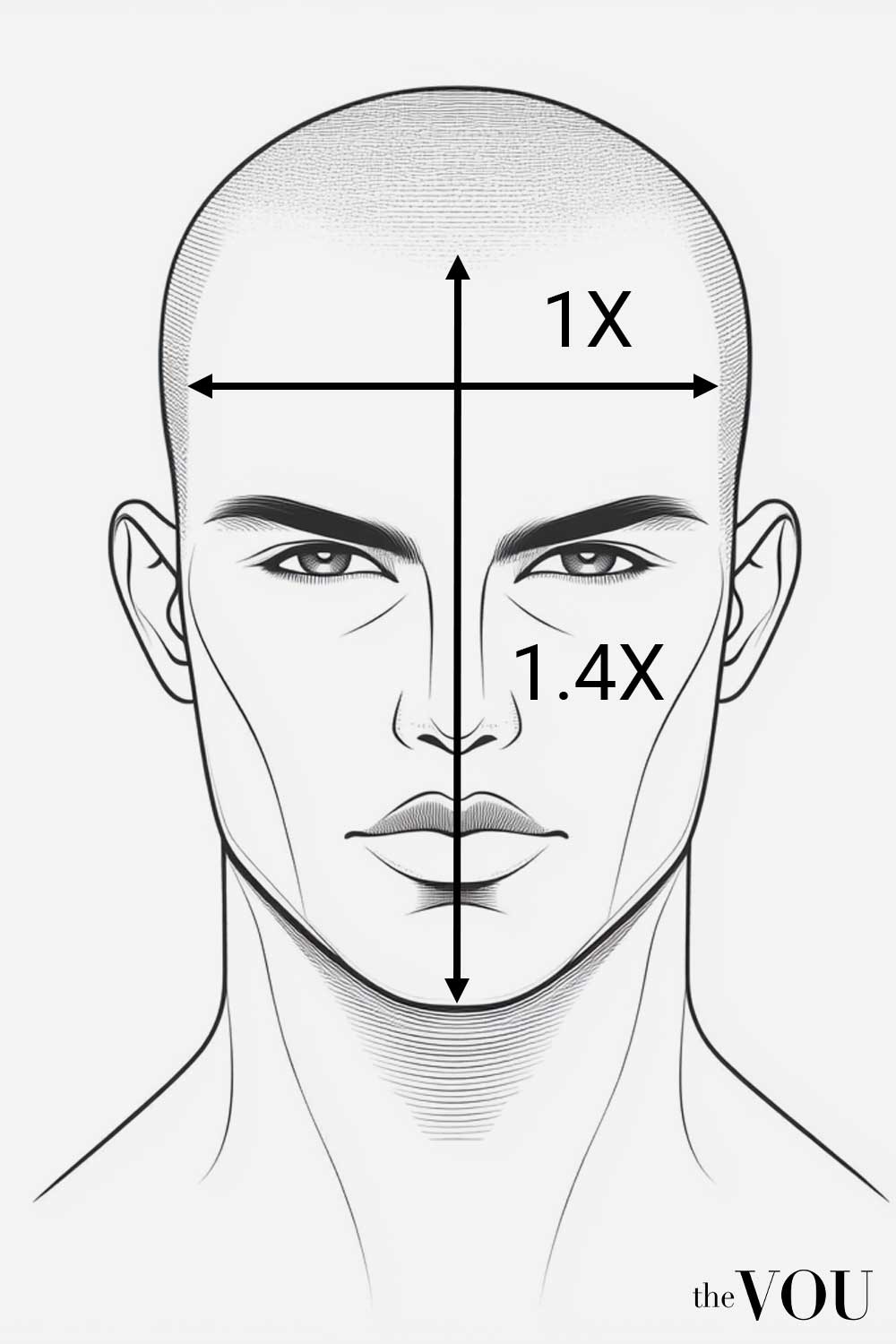
This creates a balanced vertical proportion that complements the horizontal tapering from forehead to chin. For example, with a 6-inch forehead width, your face length would typically measure between 7.8 to 8.4 inches.
Your cheekbones provide another key measurement point. In a heart-shaped face, they sit at approximately 55-60% of the total face length when measured from the chin upward.
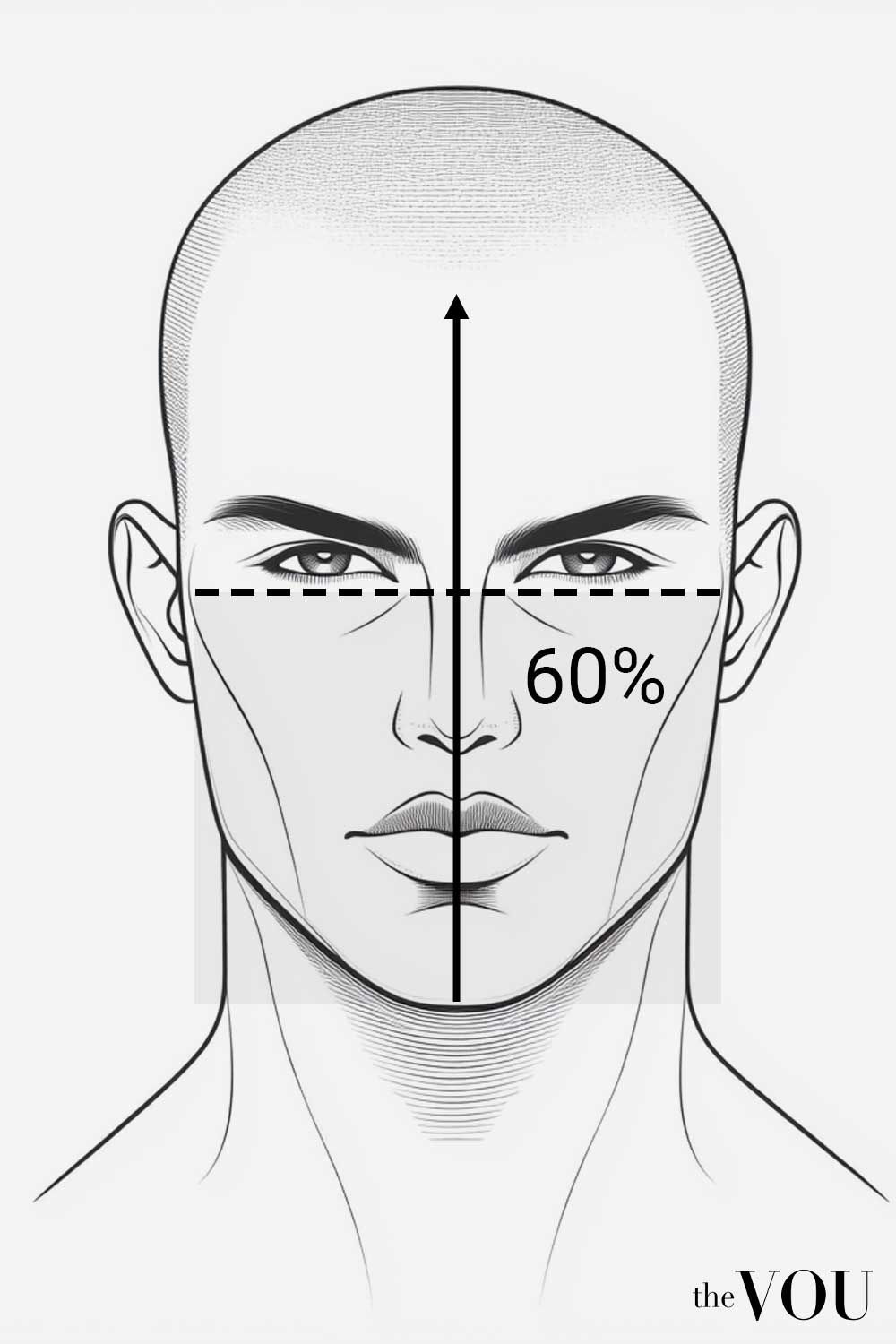
This positioning contributes to the gentle inward curve that characterises the heart shape.
For practical measurement at home, a standard credit card serves as an excellent measuring tool. a typical heart-shaped face will measure roughly 1.75 credit cards across the forehead and approximately one credit card width across the chin. The total face length generally spans about 2 to 2.25 credit cards.
The face can also be divided into vertical thirds, from hairline to eyebrows, eyebrows to nose tip, and nose tip to chin.
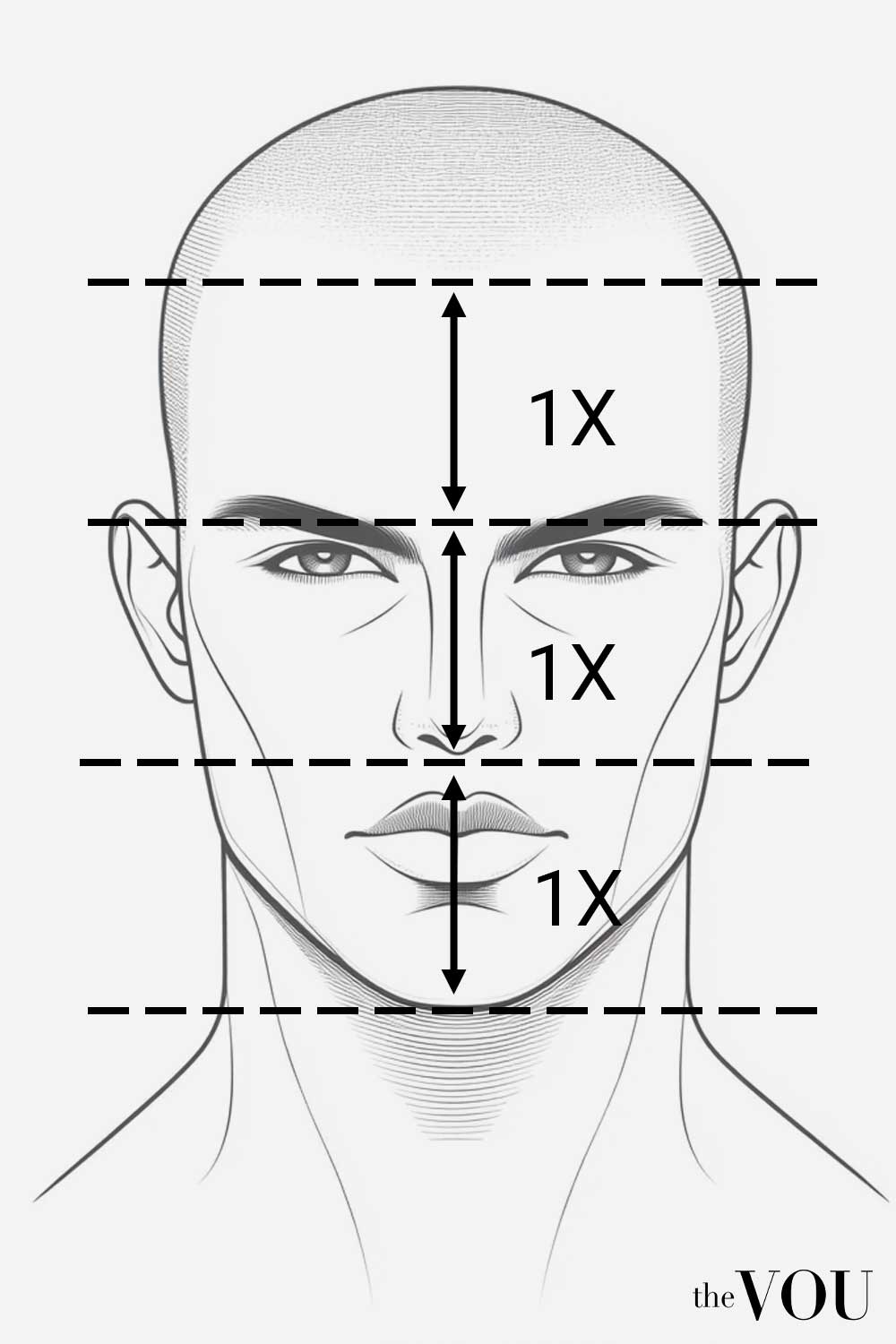
In a heart-shaped face, these thirds remain relatively equal in length, but the bottom third shows a distinctive narrowing pattern, while the top third maintains the widest measurements of the face.
To get specific numbers, in a heart-shaped face the forehead spans between 5.5 to 6.5 inches (14 to 16.5 centimetres) at its widest point, while the chin measures between 3.5 to 4.5 inches (9 to 11.5 centimetres) at the jaw corners. The total face length usually falls between 7 to 8 inches (18 to 20 centimetres) from hairline to chin point.
These measurements serve as guidelines rather than strict rules. Natural variation exists, and your face might show slight deviations while still maintaining an overall heart shape.
The key lies in the relationship between these measurements, particularly the characteristic tapering from a wider forehead to a narrower chin.
Understanding the Anatomy of a Heart-Shaped Face
The distinctive heart face shape results from specific bone structure characteristics.
The temporal bones at the forehead create the characteristic width at the upper face, while a more delicate mandible (jawbone) forms the narrower lower face.
The zygomatic bones (cheekbones) sit high but less prominently than in diamond faces, creating a smooth transition as the face tapers downward.
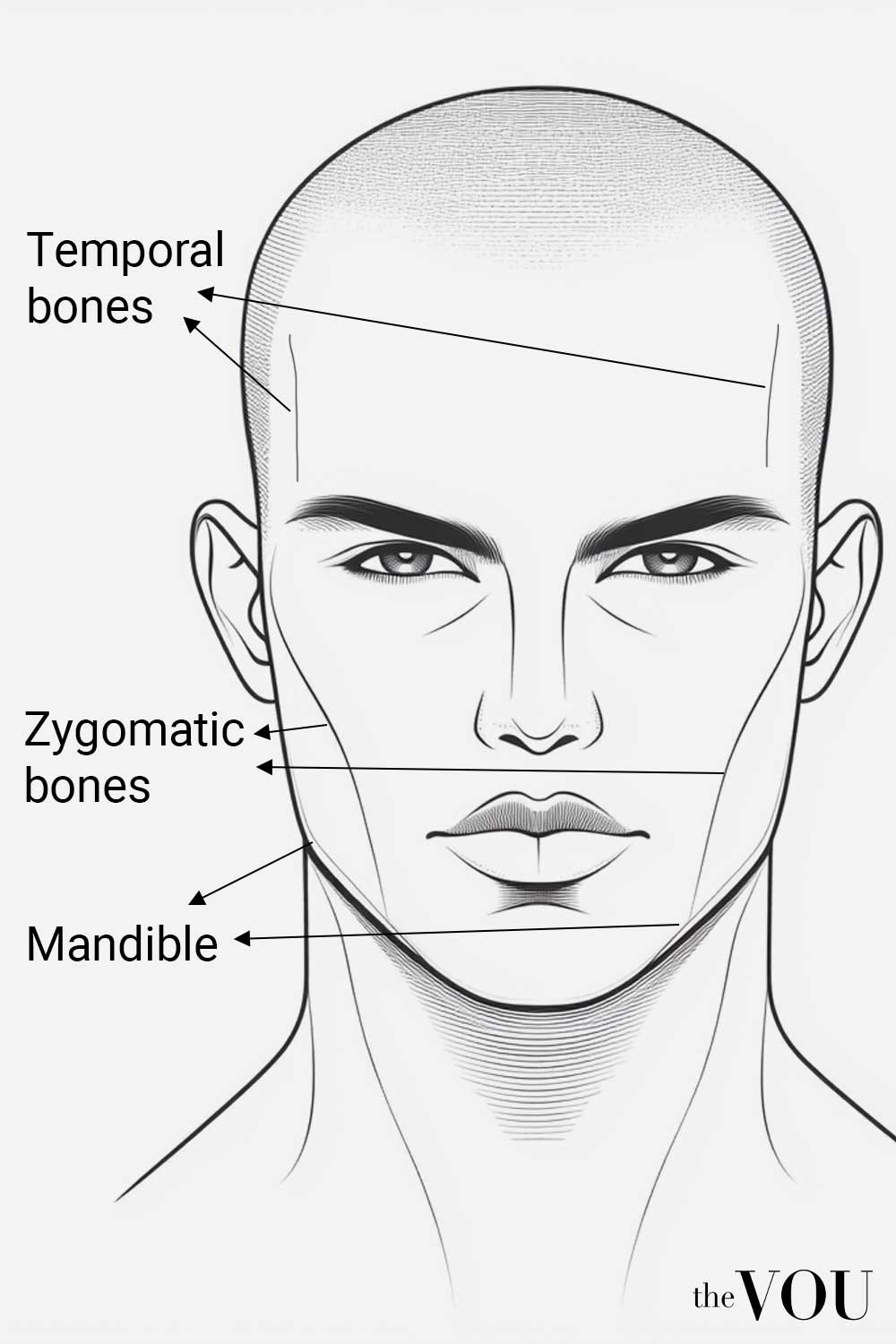
The underlying structure includes:
- A broader frontal bone creating forehead width
- High-set but moderately prominent zygomatic arches
- A narrowing mandibular structure
- A more delicate mental protuberance (chin bone)
This combination of features creates the gradual tapering effect characteristic of heart-shaped faces, where the temporal width smoothly transitions through the cheekbones to a more refined chin structure.
Facial Features and Bone Structure in Heart Face Shapes
The heart face shape isn’t just about the overall silhouette – it’s deeply influenced by the underlying bone structure and the way individual facial features work together.
Understanding these relationships helps create a more complete picture of your face shape.
Forehead and Temple Area
The distinctive width of a heart-shaped face starts with the temporal bones. These bones create a broader upper face, typically extending just past the outer corners of your eyes.
The frontal bone forms a gentle dome shape, sometimes accompanied by a slight prominence at the temples, which contributes to the characteristic wide forehead of heart-shaped faces.
Eye Area
In heart-shaped faces, the eye sockets are often slightly wider set due to the broader upper face structure.
The brow ridge typically shows a gentle curve rather than a pronounced overhang, helping create that smooth transition from forehead to eyes.
The distance between your eyes usually measures about one eye width, appearing proportionally balanced against the wider forehead.
Nose Structure
The nasal bridge in heart-shaped faces typically shows a moderate profile, neither too prominent nor too flat.
This balanced nose structure complements the gradual narrowing of the face.
The width of the nose usually aligns well with the narrowing lower face, creating harmonious proportions as the face tapers downward.
Cheekbone Architecture
While heart-shaped faces have cheekbones that sit high on the face, they’re less dramatically pronounced than in diamond face shapes.
The zygomatic bones (cheekbones) create a gentle transition point where the face begins its distinctive inward curve toward the chin.
This bone structure helps maintain the soft, curved appearance characteristic of heart shapes.
Jaw and Chin Formation
The mandible (jawbone) in heart-shaped faces becomes progressively narrower, with a less prominent angle than square or rectangle face shapes.
The chin bone, or mental protuberance, is typically more delicate and pointed, created by a narrower mandible structure that forms the characteristic heart shape point.
Ear Placement
Ear position in heart-shaped faces typically aligns with the narrowing portion of the face.
The ears usually sit at an angle that follows the face’s tapering line, with the top of the ears aligning roughly with the eyebrows and the lobes ending near the tip of the nose.
This placement helps maintain balanced proportions despite the face’s varying widths.
Impact of Bone Structure
Your underlying bone structure determines how pronounced these heart-shaped characteristics appear.
The wider temporal and upper zygomatic bones create the broad forehead, while the gradually narrowing zygomatic arch contributes to the face’s tapering effect.
The more delicate lower mandible structure results in the narrower chin, and the gentle curves of the orbital bones help create soft transitions between facial planes.
Common Variations of Heart Face Shapes
While heart face shapes share core characteristics, natural variations create unique expressions of this facial structure.
Understanding these variations helps you better identify your specific type of heart face shape and optimise your styling choices accordingly.
Classic Heart Shape Variations
The most noticeable variation occurs in chin structure.
Some heart face shapes feature a prominently pointed chin that creates a more dramatic taper, while others show a softer, more rounded chin point that maintains the narrow lower face while offering gentler contours.
Neither is more “correct” – both are natural variations of the heart shape.
Forehead Width Variations
The defining wide forehead of heart faces can vary in its expression. Some heart shapes show a dramatic width difference between forehead and chin, creating bold proportions.
Others display a more subtle ratio, with a moderately wider forehead that creates a softer heart shape effect.
The hairline may form a straight line across, show a gentle curve, or feature a widow’s peak, all while maintaining heart shape characteristics.
Transitional Heart Shapes
Some faces combine heart shape characteristics with elements of other face shapes, creating distinctive hybrid forms.
You might have a heart-oval combination, showing the wide forehead of a heart shape but with more gradual tapering typical of oval faces.
Similarly, heart-diamond combinations feature prominent cheekbones while maintaining the characteristic heart shape proportions.
Asymmetrical Heart Shapes
Perfect facial symmetry is rare in nature, and heart face shapes often show subtle asymmetries that add character without diminishing the overall heart shape classification.
One side of the jaw might angle slightly differently, or one cheekbone might sit marginally higher.
These natural asymmetries contribute to facial uniqueness while still working within heart shape parameters.
Impact of Facial Features
The placement and size of facial features can create subtle variations in how the heart shape presents.
Wider-set eyes can emphasise the broader forehead, while a stronger nose bridge might create more definition in the face’s central axis.
Fuller lips might soften the chin area’s appearance, while defined cheekbones can accentuate the face’s tapering effect.
Height and Depth Variations
Heart face shapes also vary in their vertical proportions and depth.
Some show longer proportions with an extended forehead-to-chin length, while others present a more compact vertical structure.
The depth of facial planes – how far features project from the face – can vary too, creating different shadow patterns while maintaining heart shape characteristics.
Styling Guide for Heart Face Shapes
Hairstyle Recommendations
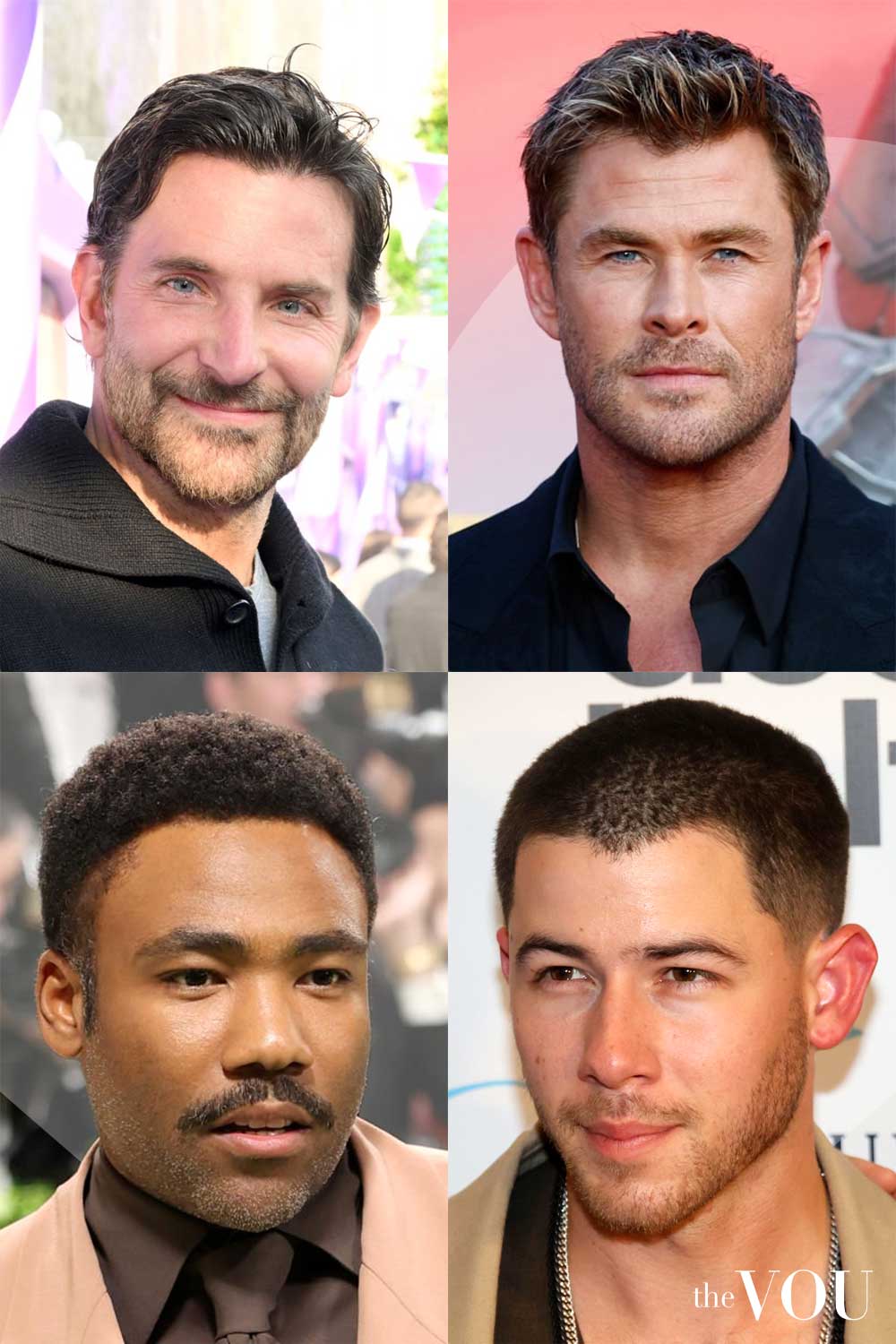
The ideal hairstyles for heart-shaped faces create balance by reducing width at the forehead while adding volume near the chin.
The textured quiff adds height and volume on top, diverting attention from the broader forehead.
Side-parted waves frame the face elegantly, while the slicked-back style offers a sleek, professional appearance that creates balance by emphasising the crown.
For more dramatic options, the pompadour provides height that balances the broader upper portion, while a curly top fade celebrates natural texture while keeping the sides neat.
Medium-length waves add natural movement and volume, distributing it evenly across the face.
Beard Styling
A fuller beard helps add structure to the lower face, particularly beneficial for heart shapes’ narrower chin area.
You can get inspiration from heart face shape celebrities like Chris Hemsworth and Nick Jonas.
Keep the growth fuller through the chin and jaw areas, following Chris Hemsworth’s approach, or consider a precise 5mm length like Nick Jonas for definition without heaviness.
Eyewear Selection
Choose frames that are wider at the bottom or have rounded edges to balance your broader forehead.
Avoid top-heavy frames or styles that add extra width to the forehead area.
Aviator styles and modified wayfarers work particularly well for heart-shaped faces.
Collar Recommendations
Spread collars work particularly well, as they create horizontal lines that add perceived width to the lower face.
V-neck styles help elongate the face and draw attention downward, balancing the broader forehead.
Point collars with moderate spread offer versatility for both casual and formal wear, while creating clean lines that complement your face’s natural tapering.
For casual wear, crew necks and scoop necks work well, but avoid very high, tight collars that can emphasise your chin’s narrowness.
For formal occasions, opt for semi-spread or cutaway collars that create horizontal balance without overwhelming your natural facial proportions.
Avoid extremely wide spread collars that might compete with your forehead width, or very narrow point collars that can emphasise your face’s tapering effect.
Heart Face Shape vs Other Face Shapes
When distinguishing a heart-shaped face from other facial structures, understanding the key differences helps identify your true face shape.
Each comparison reveals distinct characteristics that set heart shapes apart.
Heart vs Square
Square faces maintain even proportions across the forehead, cheekbones, and jaw, creating a box-like structure with clear angles.
In contrast, heart shapes show dramatic tapering, beginning with a broader forehead and narrowing progressively to a defined chin point.
While square faces create strong horizontal lines at each level, heart shapes flow inward with gentle curves.
Heart vs Oval
Though both shapes can appear elegant, their proportions differ significantly. Oval faces display balanced width transitions between forehead, cheekbones, and jaw, creating an egg-like symmetry.
Heart shapes, however, begin distinctly wider at the forehead before tapering down, breaking the oval’s characteristic balance.
The difference becomes most apparent at the forehead, where heart shapes show notably more width.
Heart vs Diamond
These shapes often get confused, but their differences lie in their widest points. Diamond faces reach their maximum width at the cheekbones, creating dramatic angles mid-face before narrowing both upward and downward.
Heart shapes, conversely, show their greatest width at the forehead, with a gradual narrowing that continues past the cheekbones to the chin. Think of it as inverting the diamond’s proportions.
Heart vs Triangle
Triangle and heart shapes represent opposite structures. Triangle faces show their greatest width at the jawline, creating a strong base that narrows upward to a smaller forehead.
Heart shapes invert this pattern completely, beginning with the widest point at the forehead and tapering down to a narrow chin. These shapes mirror each other’s characteristics.
Heart vs Round and Rectangle
Round faces maintain consistent curves from top to bottom, while hearts show distinctive tapering.
Rectangle faces keep parallel sides throughout their length, contrasting with the heart’s inward curves.
Where round faces create soft, continuous curves and rectangles maintain straight lines, heart shapes combine elements of both – starting broad and flowing inward with gentle curves to a defined point.
Frequently Asked Questions About Heart Face Shapes
Q: Can my face shape change over time?
A: Yes, your heart face shape can appear slightly different with age and weight fluctuations. While the underlying bone structure remains constant, changes in facial fat distribution and muscle tone can soften or emphasise your heart-shaped characteristics.
Q: How can I minimise my broad forehead?
A: Strategic hairstyling, particularly with side-swept bangs or textured layers, can help balance forehead width. Grooming techniques that add volume at chin level can also create better overall proportion.
Q: Does facial hair help balance a heart-shaped face?
A: Yes, maintaining fuller beard growth around the jaw and chin area helps add width to the lower face, creating better balance with your broader forehead.
Q: Can I wear my hair very short with a heart face shape?
A: While buzz cuts can work for heart shapes, they tend to emphasise facial proportions more strongly. If choosing a very short style, consider maintaining some length on top to balance your features.
Still Not Sure?
Try our quick and free face shape quiz designed specifically for men who want to confirm their face shape without complex measurements.
The quiz uses simple visual comparisons and easy-to-answer questions to determine your exact face shape.
Our face shape analysis considers multiple angles and features to provide you with accurate results.
Expert Style Guidance
Understanding your heart face shape is just the first step towards optimising your appearance.
Our Professional Face Shape Analysis package provides an expert evaluation of your facial features, identifying exactly how to style your hair, facial hair, and accessories to complement your heart-shaped proportions.
For a complete style transformation, our signature Complete Image Transformation Package includes face shape analysis along with personalised colour analysis, body shape evaluation, and comprehensive style recommendations tailored to your unique features.
After years of managing hundreds of fashion brands from London's office of a global retailer, Mandy has ventured into freelancing. Connected with several fashion retailers and media platforms in the US, Australia, and the UK, Mandy uses her expertise to consult for emerging fashion brands create top-notch content as an editorial strategist for several online publications.
With years of expertise in high-end fashion collabs and a PhD in Sustainable Fashion, Ru specialises in eco-luxe wardrobes for the modern gentleman seeking understated refinement.
With over twenty years of front-row fashion and styling events, collabs with haute-couture houses, and a PhD in Luxury Fashion, Laurenti is an expert in crafting personalised looks that depict old-money sophistication.


